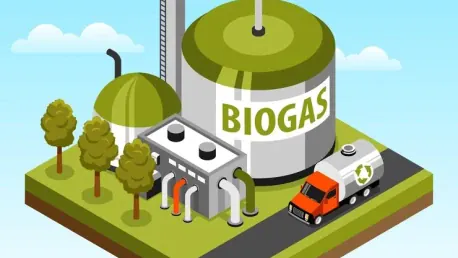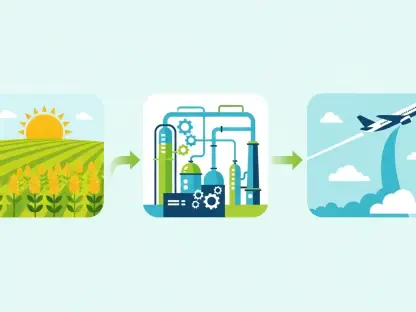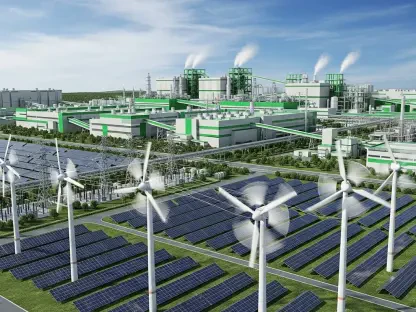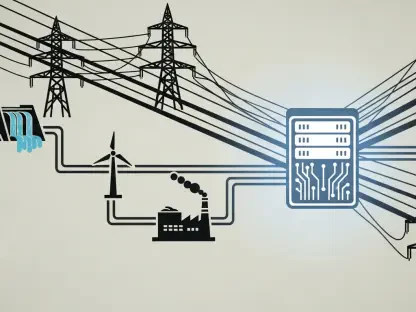Achieving net-zero emissions by 2050 is a monumental task for the UK, involving significant shifts in energy sources and policies. While electrification has taken center stage in efforts to decarbonize various sectors, biomethane presents itself as an overlooked yet vital resource. Produced from organic materials, such as agricultural residues and food waste, biomethane could play a crucial role in the energy transition by providing a renewable, carbon-negative alternative.
The Necessity of Diverse Energy Sources
Decarbonizing domestic heating is a critical part of the UK’s strategy to achieve net-zero emissions, but the push for full electrification confronts several significant barriers. One of the most formidable challenges is grid capacity, which is not currently adequate to support the complete electrification of heating systems without substantial upgrades. The financial and logistical burdens of these upgrades make the exclusive reliance on electrification impractical for meeting the UK’s stringent emissions targets.
Challenges with Full Electrification
Reducing carbon emissions from the 23 million homes in the UK that rely on gas heating is essential to achieve the desired net-zero status. The current energy grid is under considerable pressure, and upgrading it to accommodate full electrification would require extensive investment and time. This infrastructural challenge is exacerbated by the need to maintain a reliable energy supply during the transition. Thus, relying solely on electrification as a means to decarbonize domestic heating may fall short without the integration of alternative solutions like biomethane, which can alleviate the strain on the grid.
Addressing Carbon Output from Heating
The environmental urgency necessitates exploring diverse energy solutions that can complement electrification. Biomethane offers a pathway to decarbonize heating systems, leveraging existing gas infrastructure without overwhelming the electrical grid. Its adoption could ease the transition by providing an immediate, low-carbon substitute for natural gas, thus reducing greenhouse gas emissions. Additionally, biomethane production processes, such as anaerobic digestion, can capture methane emissions from decomposing organic matter, preventing these potent greenhouse gases from entering the atmosphere and providing a complementary solution to grid-based electrification.
Exploring Biomethane Production
Biomethane production in the UK has experienced significant growth, contributing to the renewable energy landscape. Over the past decade, the number of biomethane plants has doubled, with more than 700 operational facilities now in existence. These plants harness organic waste materials through anaerobic digestion, resulting in biomethane that possesses a high methane content, ranging between 95% and 99%. This clean-burning fuel can be directly injected into the existing gas grid, offering a renewable alternative to fossil fuels without the need for significant infrastructure modifications.
Rapid Growth and Production Methods
The production process of biomethane involves the decomposition of organic waste, such as agricultural residues, food waste, and sewage, in an oxygen-free environment. This process generates biogas, which is then purified to remove impurities and leave behind a potent methane-rich fuel. The ramp-up in biomethane plant construction highlights the UK’s growing commitment to renewable energy sources. The ability to inject biomethane into the existing gas grid means that it can be distributed and used in the same manner as natural gas, facilitating a seamless transition for end-users while providing critical carbon savings.
Environmental Benefits
One of the most significant advantages of biomethane is its potential to be carbon-negative. By capturing methane that would otherwise be released from decomposing organic matter, biomethane production avoids the emission of a potent greenhouse gas, thereby contributing to lower overall atmospheric methane levels. Additionally, the utilization of waste products in biomethane production promotes a circular economy, ensuring that waste materials are repurposed into valuable energy sources. This not only aids in waste management but also ensures a more stable supply of renewable energy, providing consistency compared to intermittent renewable sources like wind and solar.
Policy and Support Mechanisms
Government policies and support schemes play a crucial role in fostering the growth of the biomethane sector. The UK government has introduced initiatives such as the Green Gas Support Scheme (GGSS) and the Green Gas Levy (GGL) to encourage biomethane production. These programs offer financial incentives for the development of biomethane plants, highlighting the government’s recognition of biomethane’s potential to contribute to the nation’s net-zero ambitions. However, these initiatives also underscore the necessity for a more strategic and comprehensive policy framework to maximize biomethane’s effectiveness in the energy transition.
Existing Government Incentives
The Green Gas Support Scheme (GGSS) and the Green Gas Levy (GGL) are two prominent government initiatives designed to support the biomethane sector. The GGSS provides financial assistance to new and existing biomethane production facilities, while the GGL generates funding through a levy on gas suppliers. These initiatives are essential first steps in promoting biomethane as a renewable energy source. Nevertheless, for biomethane to reach its full potential, a clearer strategic direction, including streamlined planning and permitting processes, is required to facilitate swift implementation and broader market adoption.
Strategic Implementation
To harness biomethane’s full potential, establishing a dedicated national strategy is critical. This strategy should encompass ambitious production targets, comprehensive integration plans for the gas network, and mechanisms such as gas-blending mandates to promote biomethane usage. Streamlined planning and permitting processes can also expedite the construction of new plants, ensuring a faster rollout. By aligning with these strategic initiatives, biomethane can become a cornerstone of the UK’s renewable energy portfolio, providing a stable, scalable, and environmentally friendly alternative to conventional fossil fuels.
Biomethane’s Role in the Future Energy Mix
The consistency and reliability of biomethane make it an essential component of the future energy mix. Unlike intermittent renewable energy sources such as wind and solar, biomethane offers a stable supply that can be readily integrated into existing gas infrastructure. This stability is crucial for balancing supply and demand, ensuring consistent energy availability and enhancing grid resilience. Moreover, biomethane’s compatibility with existing infrastructure simplifies its adoption, reducing the need for costly modifications or new construction.
Balancing Supply and Demand
Biomethane’s stable production capacity provides an advantage over other renewable sources, which may be subject to fluctuations due to weather conditions. This stability facilitates better management of energy supply and demand, making it easier to integrate into the national grid. The use of biomethane in conjunction with other renewable sources can help stabilize the overall energy system, providing a balanced and reliable supply. This multifaceted approach contributes to the resilience and flexibility of the energy network, supporting the UK’s broader objectives for renewable energy diversification.
Net-Zero Heating Sector
The incorporation of biomethane into the heating sector holds significant promise for reducing carbon emissions, which is a crucial piece of the net-zero puzzle. Given the ongoing challenges associated with achieving full electrification, biomethane emerges as an indispensable solution. It provides a renewable, low-carbon alternative to natural gas, facilitating the decarbonization of heating systems without imposing additional burdens on the electrical grid. By integrating a mix of energy sources, including biomethane, the UK can optimize its approach to achieving a comprehensive and environmentally sustainable energy system.
Conclusion: Unlocking Biomethane’s Potential
Achieving net-zero emissions by 2050 is a monumental challenge for the UK, necessitating major changes in energy sources and policies. While electrification has primarily dominated the conversations around decarbonizing various sectors, the role of biomethane should not be underestimated. Biomethane, produced from organic materials like agricultural residues and food waste, offers a renewable and carbon-negative alternative that can significantly contribute to the energy transition. This often-overlooked resource could play a pivotal role in achieving carbon-neutral goals. By integrating biomethane into the energy mix, the UK can diversify its energy sources, reduce dependency on fossil fuels, and leverage waste products that would otherwise contribute to landfill emissions. As the nation moves towards a greener future, considering a blend of both advanced electrification technologies and underutilized resources like biomethane could prove to be a comprehensive strategy in meeting 2050 emissions targets.









